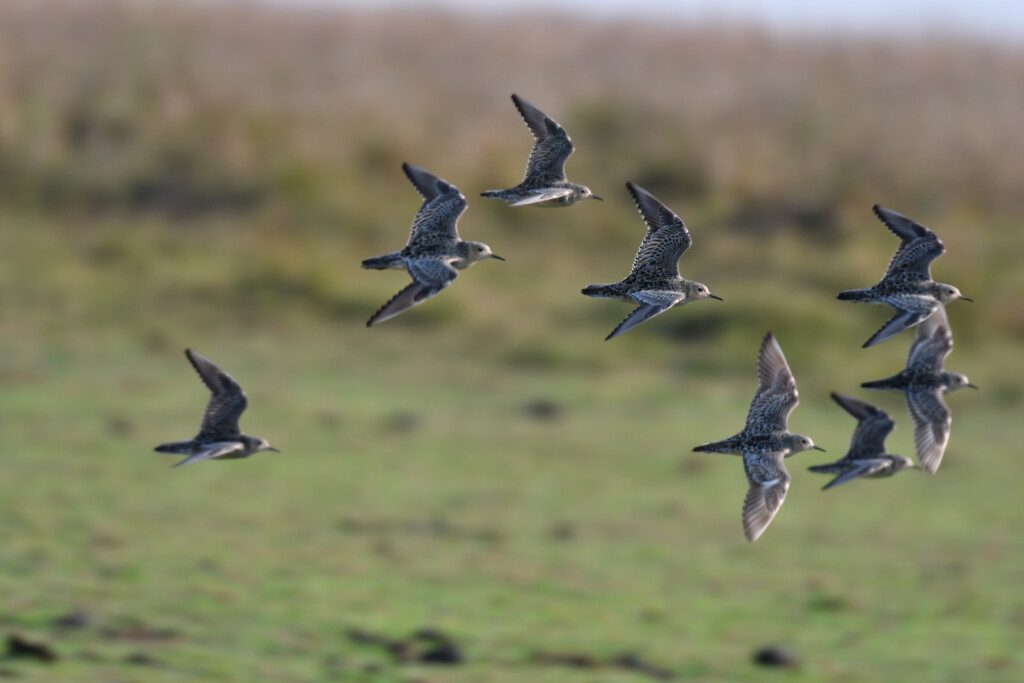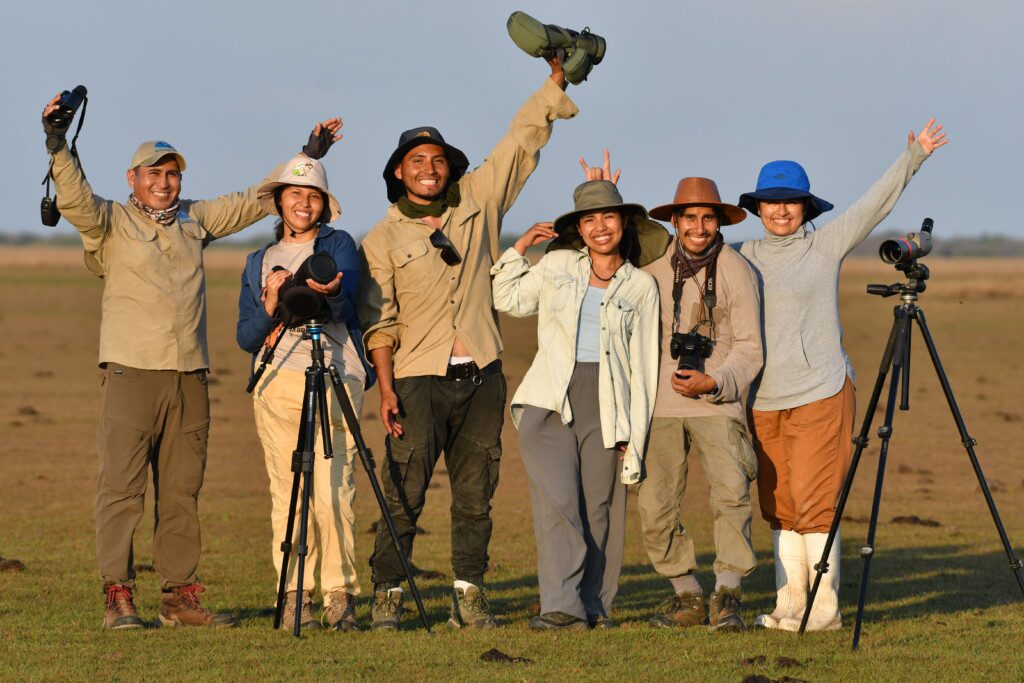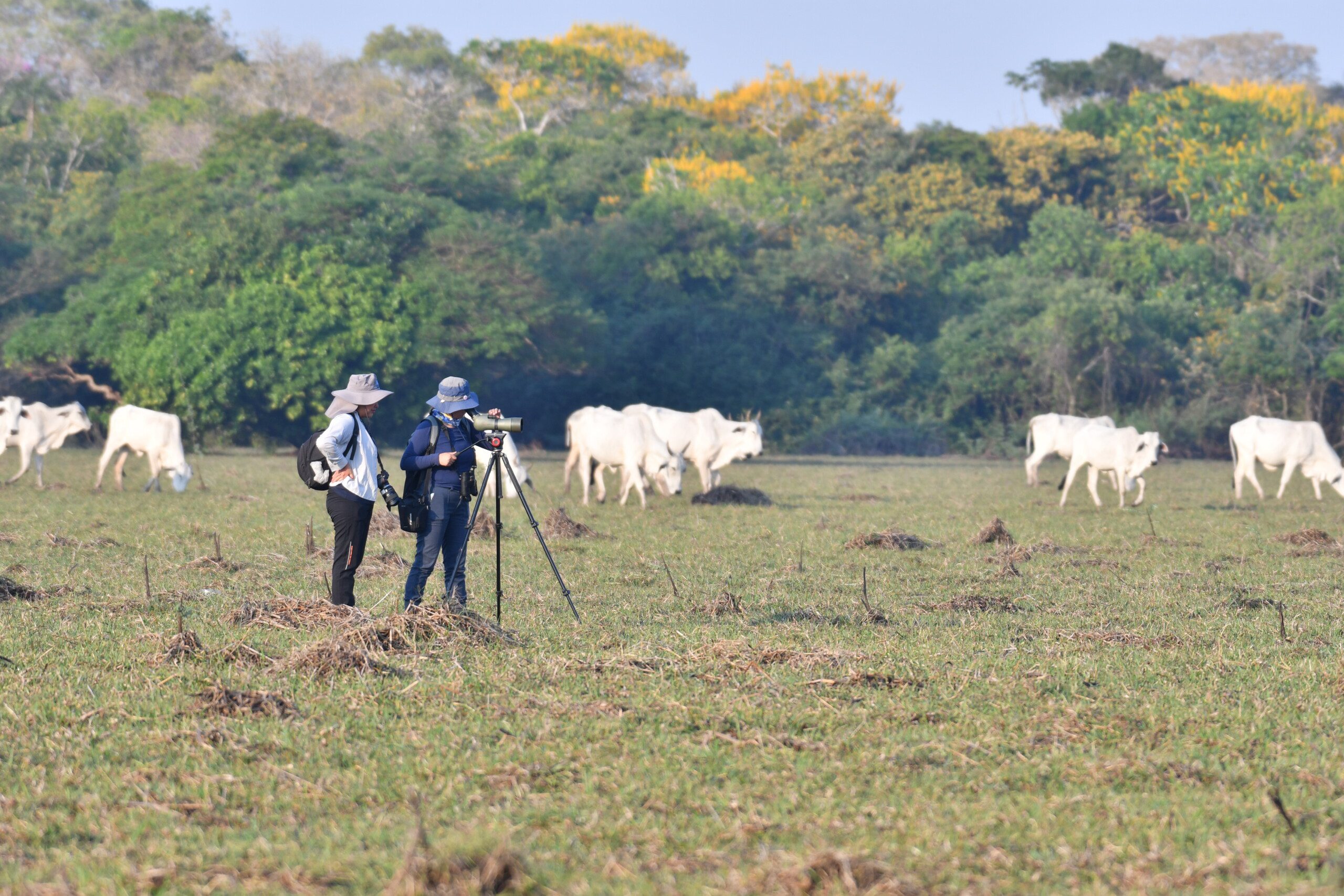From September 1 to 30, Asociación Armonía is conducting its annual monitoring of long-distance migratory shorebirds in the Llanos de Moxos. As in previous years, the surveys take place at the Barba Azul Nature Reserve, located at the heart of this landscape in northern Bolivia. The novelty this year is the expansion of monitoring to three additional sites within the same region: Santa Ana de Yacuma, Estancia Espíritu, and Estancia San Simón. The aim is to evaluate whether these areas also play a key role for shorebirds, particularly the Buff-breasted Sandpiper (Calidris subruficollis), a species classified as Vulnerable. This work is supported by the Neotropical Migratory Bird Conservation Act Program (NMBCA) of the U.S. Fish and Wildlife Service, MANOMET and the U.S. Forest Service.
The expansion of monitoring seeks to generate information to understand the importance of the entire Llanos de Moxos landscape for this migratory species. Currently, Barba Azul Reserve hosts more than 4% of the global population of Buff-breasted Sandpipers, making it a site of regional importance within the Western Hemisphere Shorebird Reserve Network (WHSRN). However, it is hypothesized that multiple sites across the landscape could collectively support a significant proportion of the population. If it is confirmed that over 30% of the global population uses these savannas, the Llanos de Moxos could be recognized as a site of hemispheric importance, which would change the scale of conservation for the area.
“Our goal is to confirm that the Llanos de Moxos is a key site for shorebirds at the continental level. We know that Barba Azul already meets the criteria, but by including additional sites, we could demonstrate that this landscape is used by an even greater proportion of the global Buff-breasted Sandpiper population,” said Tjalle Boorsma, Conservation Program Director at Asociación Armonía.


Photo: A group of Buff-breasted Sandpipers (Calidris subruficollis) flying over one of the low-lying wetlands in Santa Ana de Yacuma. Teodoro Camacho, Armonía
The selection of these areas is based on the first landscape-scale census conducted in 2021 by Armonía with the support of Manomet, when 764 survey points and over 1,200 kilometers were covered to identify migratory stopover sites. That study recorded 673 individuals across 13 sites outside Barba Azul and revealed that shortgrass habitats—essential for the species—are scarce, representing only 3.4% of surveyed points, and are closely associated with livestock grazing. Based on these findings, three areas with high potential were prioritized for simultaneous monitoring this year.
Monitoring involves recording the number of birds at each site, grass height, and the presence of livestock, as Buff-breasted Sandpipers rely on shortgrass habitats between 4 and 8 centimeters for foraging. At Barba Azul Reserve, this condition is maintained through livestock grazing, a key interaction for habitat conservation. “These data allow us to identify optimal sites for the species and understand how habitat quality is maintained,” explained Teodoro Camacho, monitoring coordinator.
Starting September 1, a team of eleven young professionals and technicians joined this effort: Teodoro Camacho, Shorebird Monitoring Coordinator; Erick Zeballos, Coordination Assistant at the Barba Azul Nature Reserve; Renata Collareta, Gabriela Garrido, Zeleida Espinoza, and Edson Morales, Research Assistants at the same reserve; Sofía Lottesberger, Researcher in Santa Ana de Yacuma; Whitney Monje and Bruno Parada, Researchers at Estancias Espíritu; and Joel Miserendino together with Pablo Adrián Ortuste, Researchers at Estancia San Simón.


Photo: The shorebird monitoring team at the Barba Azul Nature Reserve. Marizol Huarachi, Armonía
Between 2019 and 2024, Barba Azul has recorded notable figures: in 2024, over 3,000 individuals were estimated, while the record year was 2022 with nearly 4,000 birds. On a single day, a group of more than 1,400 individuals was observed, highlighting the site’s importance along the migratory route.
The Buff-breasted Sandpiper undertakes a journey of thousands of kilometers from the Arctic, where it breeds, to Argentina, Uruguay, and southern Brazil. After flying from Texas and crossing the Amazon rainforest, these birds find in the natural savannas of the Llanos de Moxos a critical stopover, where they remain for four to eight days before continuing south.


